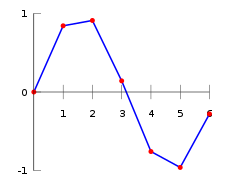Before we land: simulations
As usual we will perform simulations before the actual landing. This is to predict the situation and avoid failures like crashing or deploying the parachute too early. To simulate we will be getting a hand from our good old friend: Euler Cromer!
Quick recap: Euler Cromer algorithm is a follows
\(a = (\text{acceleration depending on what forces act on our landing unit})\)
\(v_{new} = v_{previous} + a\cdot \Delta{t}\)
\(x_{new} = x_{previous} + v_{new}\cdot \Delta{t}\)
Ps. Noticed how we mentioned landing unit and NOT spacecraft? We don't land with the entire spacecraft, but deploy the landing unit which is usually the tip of the spacecraft.
So what forces are acting on our spacecraft and when:
-
When landing unit is falling, our spacecraft affected by
\(F_g = - mg\), gravitation
\(F_d = \frac{1}{2}\rho C_dAv_{drag}^2\), air resistance
The expression for acceleration is therefore
\(a = \frac{(F_d + F_g)}{m}\)
(using Newton's second law of motion \(\textbf{F} = m\textbf{a}\))
- When are landing thrusters are activated we have
\(F_g = - mg\), gravitation
\(F_d = \frac{1}{2}\rho C_dAv_{drag}^2\), air resistance
\(F_L = \frac{1}{2}\rho_0 A(v_t^2-v_{safe}^2)\), landing thrusters
The expression for acceleration is therefore
\(a = \frac{(F_d + F_g+F_L)}{m}\)
What else could wrong that we need to take into consideration when simulating?
- The parachute will fail if the drag force exceeds 250 000 Newtons
- The lander burns to ashes if the drag pressure exceeds 107Pa.
Here is what the simulation looks like:

Yes, it is completely black :) We did not manage to simulate...
Here are my thought on where it went wrong:
- I found it to be appropriate to use polar coordinates instead of cartesian coordinates. However, polar coordinates are not my strongest suit. That made me very confused when converting different variables... So it is not unlikely that I may have converted wrong or just not converted at all throughout my python script.
- In the equation for \(F_d\), air resistance, there is a \(\rho\), density, which depends on what height we are at. I fetched all the density values from our atmosphere model, but the computer could not find it at all??? Ugh... anyways, without the computer finding them, I could not interpolate between the values and run it trough Euler cromer...
Interpolation:
From the atmosphere model we have a list of density values at different heights. What we don't have is density value for every centimeter, millimeter etc. So using those known values we do have, we can create approximated values in between by playing a game of connect the dots.

Yes, interpolation is basically connect the dots. Notice how figure 1 has a couple red dots that are known values? And by connecting the dots with the blue line (interpolation), we have a curve describing the data points!! Beautiful
Now you are probably asking yourself: wasn't the whole part of simulating to avoid failures? The answer is yes, yes it was. So our only hope is to try and fail... Not that we have successfully done that before. Please pray for us.
Time: 1.6 yr Video recording started. Spacecraft boosted with delta-v (0, -500, 0) m/s. Spacecraft fell for 1300 s.
Parachute area: 50 m^2 Landing thruster properties: Force: 600 N
Landing module launched at time 1300 s with delta-v (100, 0, 0) m/s. Time: 1300 s Position: (1.66973e+06, 1.22387e+06, 0) m Velocity: (-1264.89, 630.043, 0) m/s
Lander fell for 1500 s.
Parachute with area 50 m^2 deployed at time 2800 s.
Lander reached the surface at time 4039.51 s. Successfully landed on planet 4 at time 4039.51 s with velocity 2.85558 m/s. Well done! *** Achievement unlocked: Touchdown! ***
Landing site coordinates recorded: theta = 90 deg phi = 60.9494 deg
Comments (since all values was not printed on our computers):
After the parachute was deployed we fell for 1239 s, where maximum velocity for safe landing is 3 m/s. I believe we deployed the parachute at maximum height 3.7 km, which is really fucking close to planet surface, holy shit.
HERE IS THE PART WE ALL HAVE BEEN WAITING ON:
GET COMFORTABLE, MAKE POPCORN, DIM THE LIGHTS AND ENJOY US LANDING ON LAJALAND!!
Ps. Turn up the volume for a dramatic effect.
Previous Next
